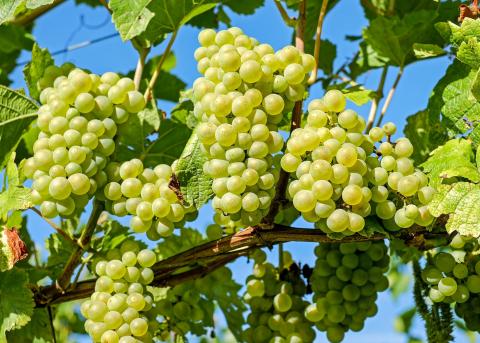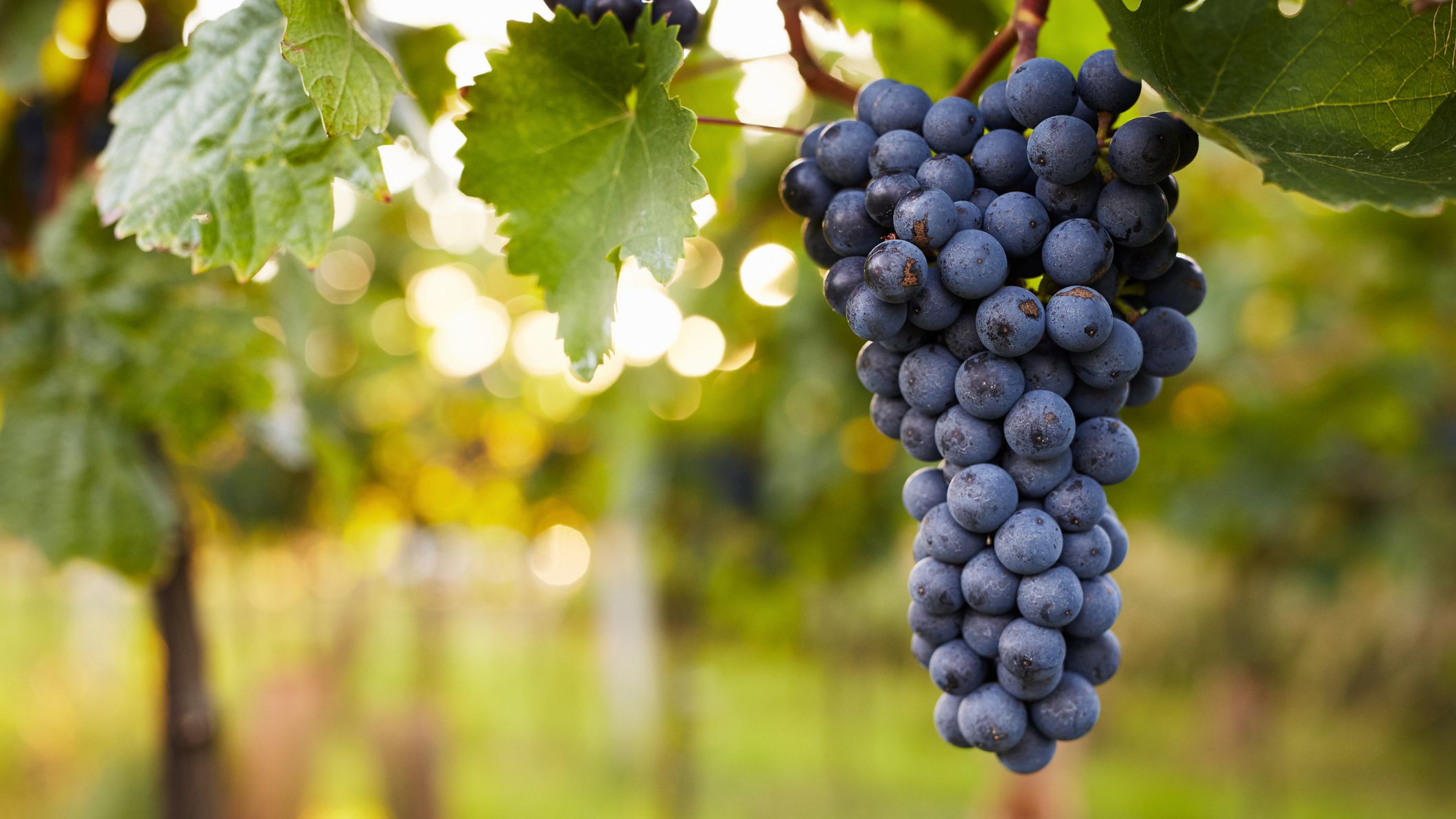Unveiling the Mystique of Cultivating Golden Grapes
Outline
- Introduction
- Growing Yellow Grapes
- Five Simple Steps to Cultivate Yellow Grapes
- Nourishing Your Yellow Grapes with Occasional Feeding
- Conclusion

Introduction
Have you ever indulged in the fanciful daydream of plucking luscious clusters of sun-kissed, succulent Yellow Grapes from your very own backyard vineyard? The art of cultivating Yellow Grapes is not as daunting as it may seem. Embark on a journey to grow these golden delights with confidence and finesse.
Growing Yellow Grapes
Yellow Grapes thrive in USDA zones 4 to 10, making them adaptable to nearly any region in the continental United States. Whether you possess good-quality soil, available space, and a willingness to indulge in some annual pruning, nurturing Yellow Grapes is no more challenging than tending to any other garden crop.
Choosing the Right Variety
Unlocking the secrets to success starts with determining your purpose for growing these grapes – be it for consumption or winemaking. Then, carefully select the most suitable varieties that flourish in your specific location. We’ve curated a selection of beloved varieties to assist you in this endeavor. Once you’ve settled on your choices, follow the step-by-step guidelines for planting, tending, and reaping the delightful rewards in the early fall or late summer, just three to four years from now.
Five Simple Steps to Cultivate Yellow Grapes
-
Discover the Perfect Spot for Planting Your Yellow Grapes
Your vineyard requires a spacious, sun-soaked expanse of soil with excellent drainage. Vertical growth on trellises or arbors demands about fifty to a hundred square feet per vine, while horizontal planting in rows necessitates approximately eight feet of space between rows. To ensure the optimum growth of Yellow Grapes, bask them in the glory of seven to eight hours of direct sunlight each day. Although they can thrive in various soils, they truly flourish in well-drained, fertile, organic soil, free from excessive moisture that could lead to their demise. Proper air circulation around the vines serves as a natural deterrent against fungal afflictions like powdery mildew.
-
Handpick the Ideal Grape Variety Suited for Your Climate
The realm of Yellow Grapes encompasses three primary types – American, European, and Muscadine. Additionally, hybrids like the delightful Zestful Yellow Grapes are forged by blending American and European varieties. American Yellow Grapes (Vitis labrusca) reign supreme in cold-hardiness, thriving in zones 4 to 7, particularly well-suited for regions with shorter growing seasons such as the Northeast. Often enjoyed as table grapes, they also shine in the production of jellies and juices.
European Yellow Grapes (Vitis vinifera), on the other hand, prefer the embrace of a dry, warm Mediterranean-like climate in zones 7 to 10, where a more extended growing season awaits. Depending on the variety, they prove their mettle both as table grapes and for the art of winemaking. Indigenous to North America, Muscadine Yellow Grapes (Vitis rotundifolia) revel in the humid embrace of zones 7 to 9, flourishing in the bounteous South. These grapes excel in both winemaking and table grape prowess.
Choose wisely, considering the peculiarities of your USDA zone, as certain varieties thrive in cooler temperatures, while others embrace the warmth. For tailored advice on the finest grape varieties for your specific locale, seek guidance from your local Independent Garden Center.
-
Plant Your Treasured Grapevine with Care
While table grapes do not demand elaborate support systems, training them on a trellis allows for easier pruning and harvesting. Wine grapes, on the other hand, require horizontal structures to offer the necessary support and training. If you inhabit a mild winter zone (USDA Zone 7 and above), early winter planting is viable. In cooler regions, bide your time until early spring. The root system of grapevines delves deep, as far as fifteen feet, so be sure to dig a planting hole that extends approximately two feet in depth and width, enriched with nourishing compost.
-
Determining the Number of Grape Vines to Cultivate
Expect mature table grapevines to yield a generous bounty of 15 to 30 pounds per vine. If you prefer a modest harvest, a few vines will suffice. However, should the art of winemaking captivate your imagination, brace yourself for a more ambitious undertaking, as it takes approximately 40 pounds of grapes to produce twelve bottles of wine. Embark on your viticultural journey with a plethora of vines at your disposal.

-
Nurturing and Pruning Your Grapevines with Tender Care
Yellow Grapes flourish on one-year-old growth, underscoring the importance of diligent pruning to eliminate older growth and stimulate fresh sprouts. The most common pruning mistake is the lack of decisiveness – when a grapevine is fully established, it thrives best with substantial pruning, allowing for bountiful new growth.
There are several training methods to explore, depending on your gardening aspirations and the support structure you’ve chosen:
- Vineyard style: A traditional setup, featuring two wires strung between posts, enables easy harvesting and occupies a narrow space along a fence or wall. One main trunk and a one-year-old cane with approximately eight horizontally extending buds on each wire typify this approach. To glean insights into professional grapevine pruning, seek inspiration from the experts.
- Trellis or pergola cultivation: Infuse edibles with a touch of decorative charm by training Yellow Grapes onto arches or utilizing them to cast seasonal shade upon a pergola. Picture the delight of plucking a delectable snack while unwinding on your patio!
For a simpler, more casual approach, trim your grapevines during early spring or late winter. When the pruning is complete, the vine should display only two components: a permanent main trunk or trunk and the one-year-old growth. Avoid preserving all the year-old growth; instead, remove excess older wood and thin out and shorten the one-year-old growth, leaving anywhere between two to eight buds on a cane. Summertime may see you conducting minor pruning to tame the wild exuberance of your vines. Thinning can improve fruit exposure to sunlight and bolster airflow, mitigating the risk of powdery mildew. If excessive shade encumbers fruit growth, selective thinning can be a remedy.
Nourishing Your Yellow Grapes with Occasional Feeding
Grapevines do not harbor an insatiable appetite for fertilizer; therefore, a conservative approach to fertilization suffices. During early spring, apply approximately 8 to 10 ounces of 10-20-20 or 10-10-10 fertilizer. Alternatively, welcome the new season by enriching the soil surrounding your Yellow Grapes with a layer of premium compost, generously supplying them with the nutrients they crave to thrive and produce a yearly cornucopia.
Conclusion
For the ultimate handbook on cultivating Yellow Grapes, penned by a 20+ year professional, delve into the secrets that unlock the potential of growing 40+ pounds of grapes per vine, yielding a bounteous harvest beyond your wildest dreams. Savor the fruits of your labor and indulge in the ethereal essence of Golden Grapes. Click Here to unveil the enigmatic world of viticulture!
Click Here To learn how to Grow Perfect Grape Vines That produce Up to 42 pounds each!


